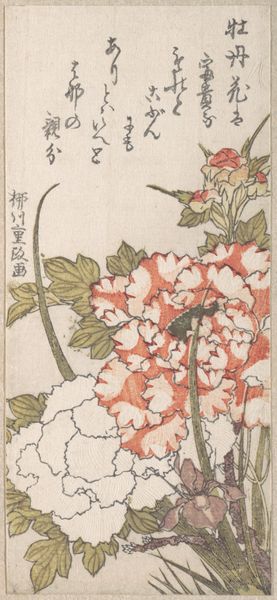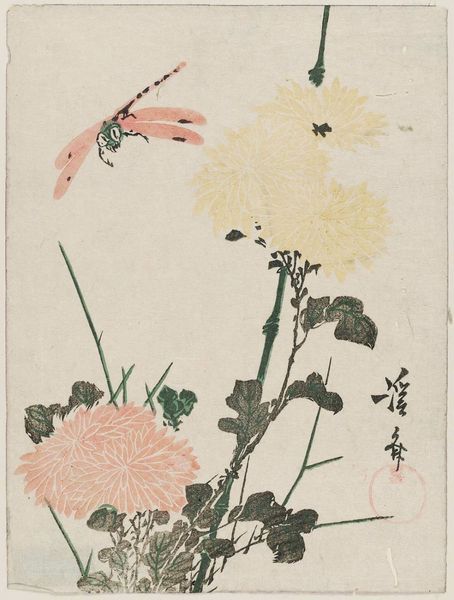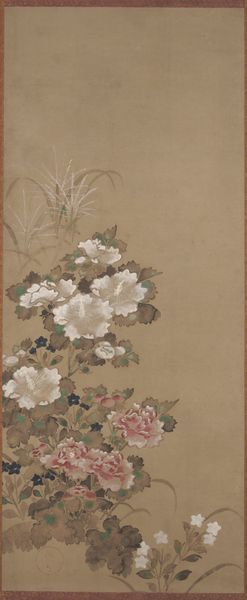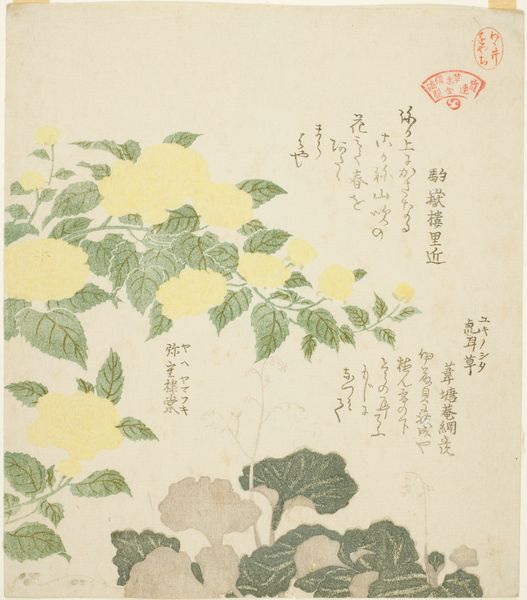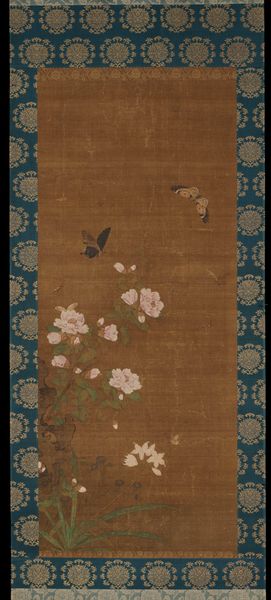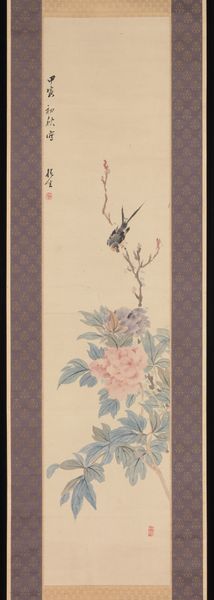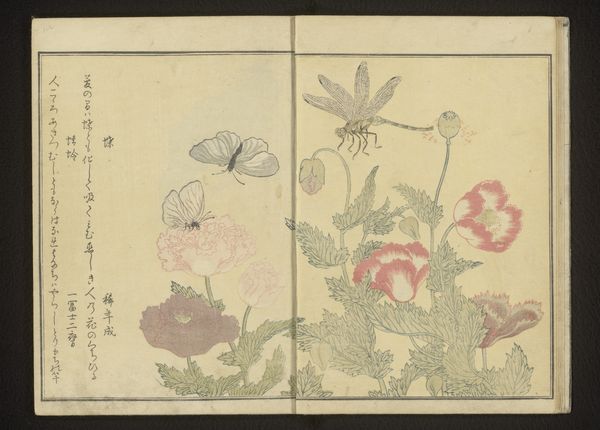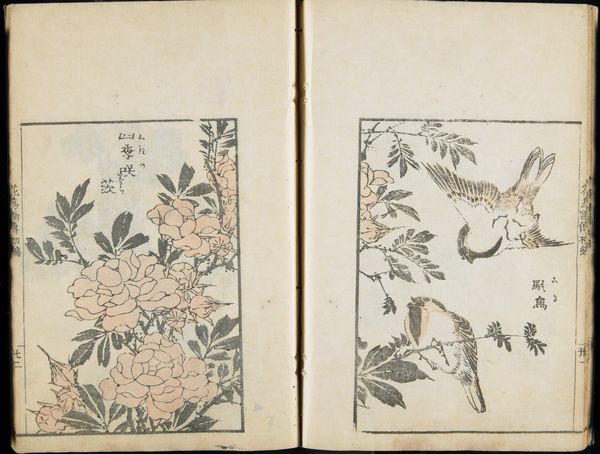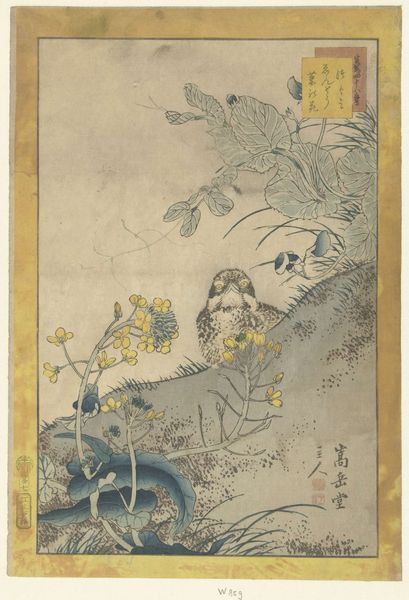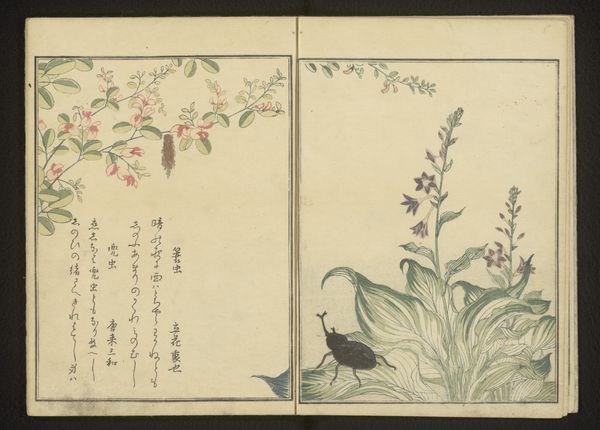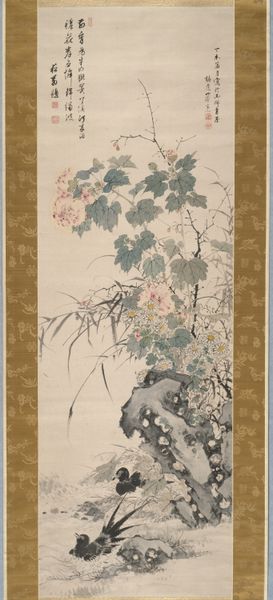
Autumn Flowers: Peonies and Bellflowers, from the book "Mirror of Beautiful Women of the Pleasure Quarters (Seiro bijin awase sugata kagami)," vol. 2 1776
0:00
0:00
print, woodblock-print
# print
#
asian-art
#
ukiyo-e
#
figuration
#
woodblock-print
#
orientalism
Dimensions: 21.9 × 50.6 cm (8 9/16 × 6 1/16 in.)
Copyright: Public Domain
Kitao Shigemasa made this woodblock print, Autumn Flowers: Peonies and Bellflowers, in Japan. It was published as part of a series called “Mirror of Beautiful Women of the Pleasure Quarters.” This title gives us a clue to its social context. In the Edo period, prints like this were mass-produced and widely circulated. They catered to a public interested in the licensed pleasure districts of cities like Edo, now Tokyo. The book featured portraits of courtesans alongside images of flowers, insects, and birds. Peonies and bellflowers had symbolic associations. The gorgeous peony was linked with wealth and luxury. Bellflowers, on the other hand, represented the autumn season and a sense of longing. Here, they remind us that the fleeting beauty of the flowers is like the transient lives of the women portrayed in the series. To understand the social and cultural significance of prints like these, we can consult historical documents and literary sources that offer insights into the lives and experiences of the pleasure quarters' inhabitants.
Comments
No comments
Be the first to comment and join the conversation on the ultimate creative platform.
